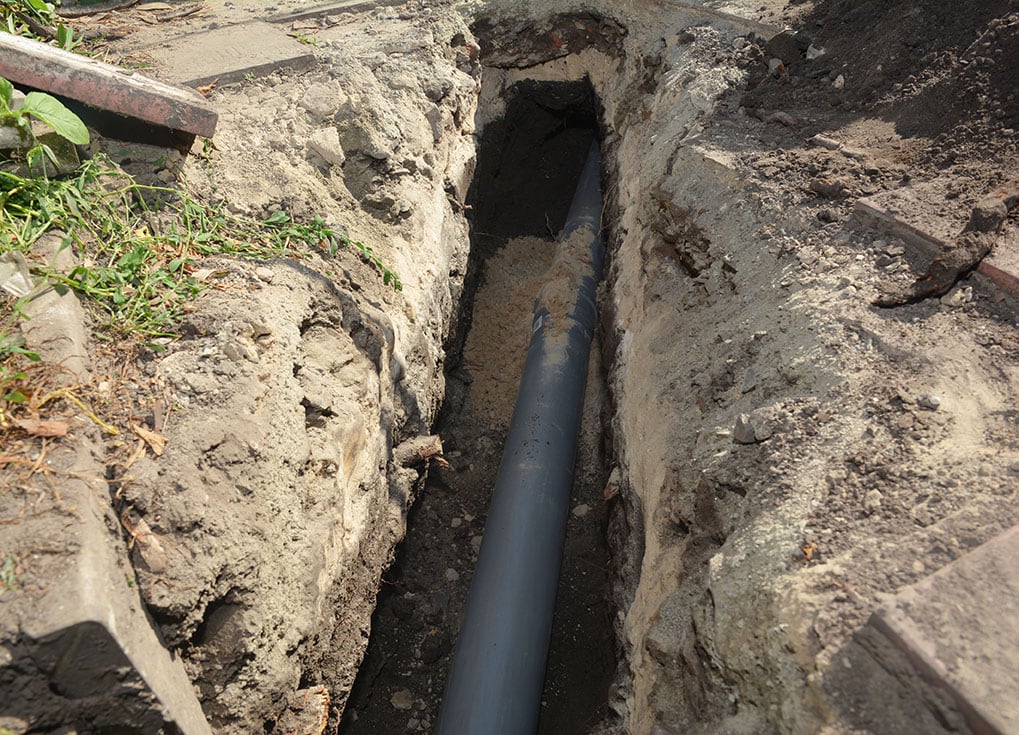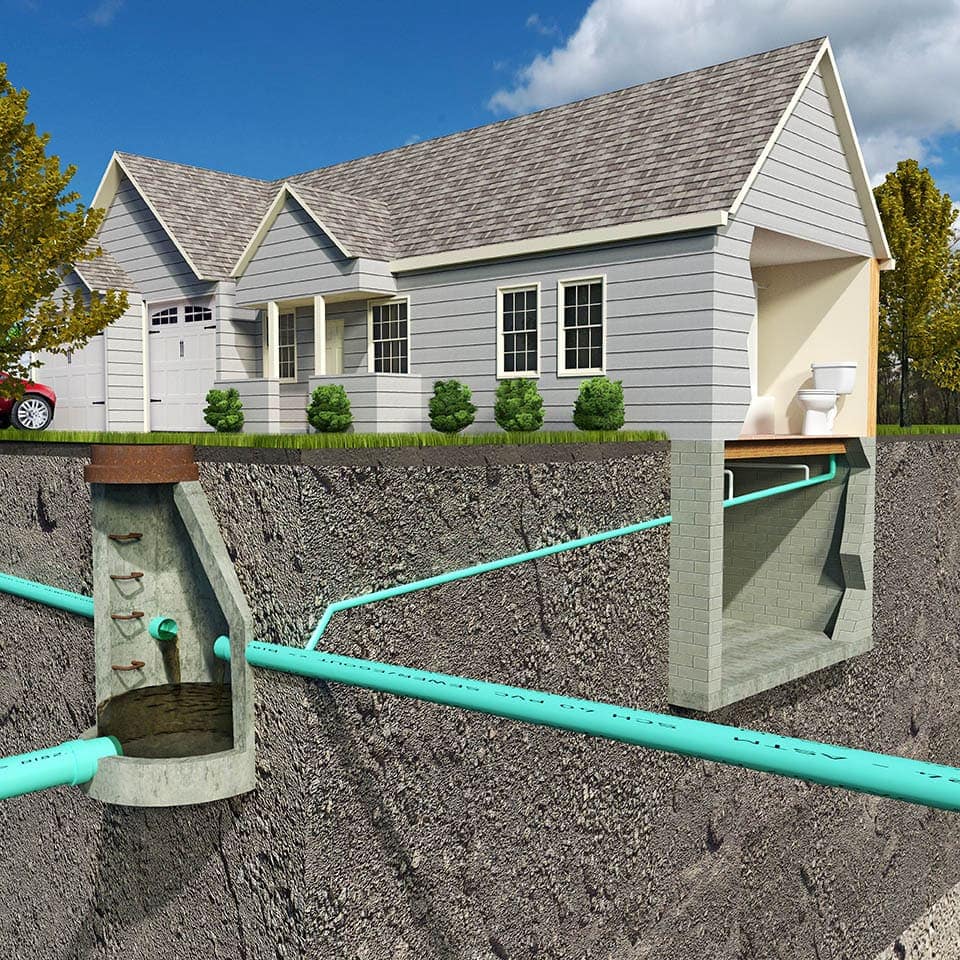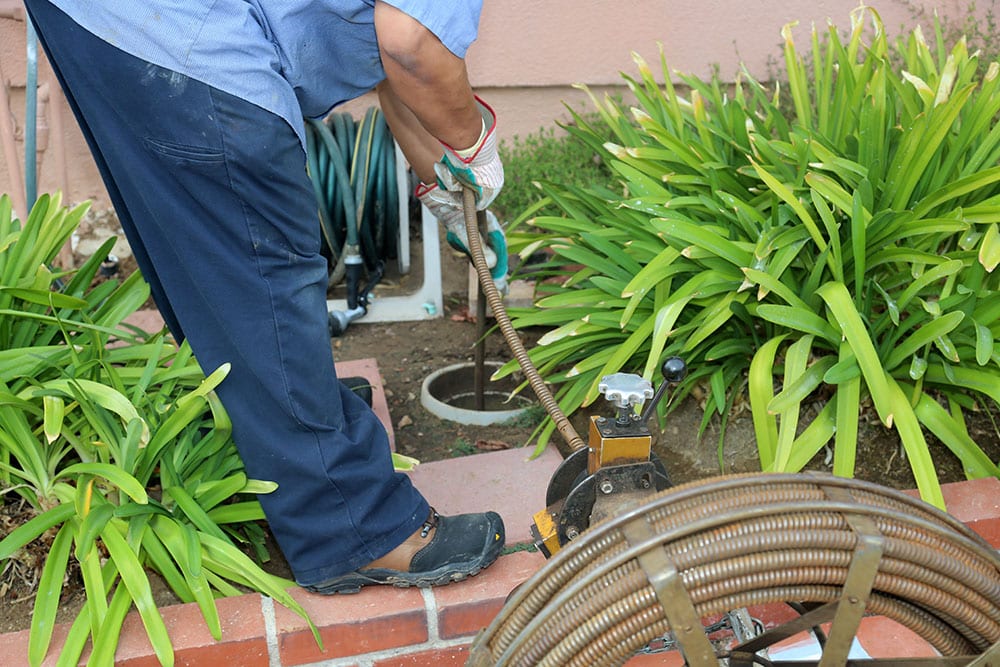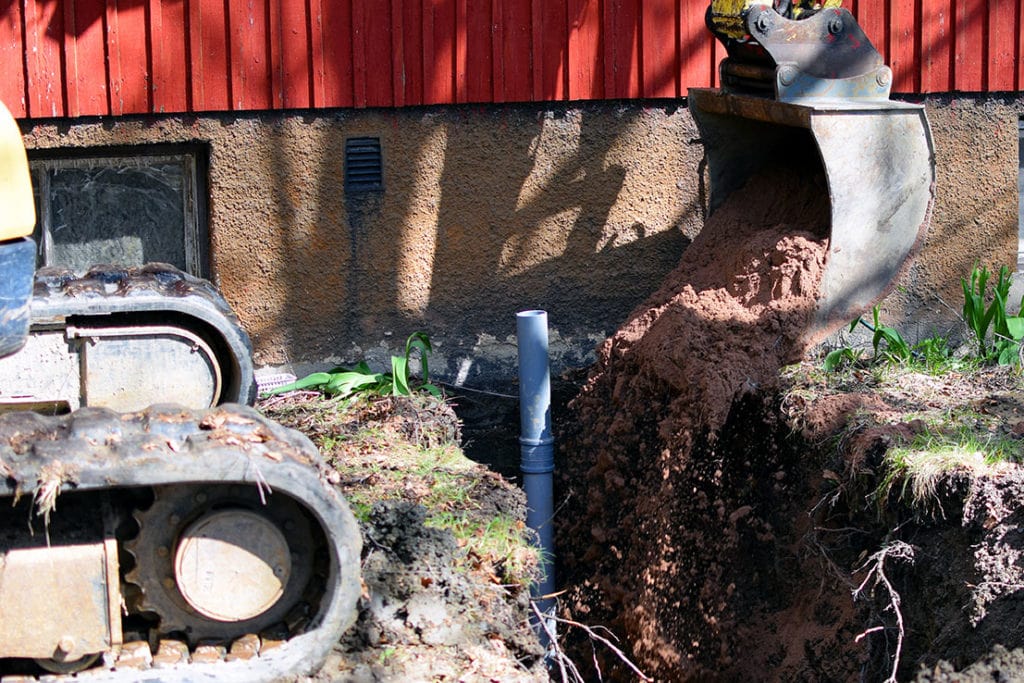How Much Does It Cost To Replace a Sewer Line In 2025?
-
Codee Chessher
- Last updated:

Of all home repairs, sewer lines are the least glamorous. Nobody wants to spend tons of money to tear up your yard to replace old, smelly piping, but it has to be done. Without a properly installed sewer line, you risk your sewage waste backing up into your yard or the house itself. How much does it cost to replace a sewer line, anyway? We’re about to cover the answer to that as well as other relevant info you should know when having this repair done.
The Importance of Your Sewer Line
Your sewer line has the unenviable job of disposing of your wastewater, safely transporting it to city sewer lines. Most sewer lines eventually run to a water purification facility, where water is repurposed and recirculated through the area.
When your sewer line has issues, it has several detrimental effects in your home. Among them is that your drains will slow down, signaling a leak or worse damage. You may also notice a foul odor like human waste, which happens when wastewater gets stuck in the line due to a leak or damage. This type of odor can be observed in the kitchen, too, if it uses the same piping. Food in the drain will foster bacteria growth and rotten smells.

Sewer Line Repair & Replacement Costs
Even the simplest sewer line repair can cost you a pretty penny. The cheapest sewer line repair jobs start at about $1,000, while replacements and severely damaged pipes can run you $5,000 or more. Fortunately, that’s the most you’ll pay to replace your sewer line unless it’s very long.
The primary factor that determines how much you pay is how much pipe you need replaced in feet. Per foot, you’re looking at between $50 to $175. Pricier types of pipe will cost more, and your location will also affect how much you pay. For instance, plastic or PVC piping is the most common type, but it isn’t nearly as durable as cast iron pipe. The tradeoff is that cast iron costs several times as much per foot.
Additional Anticipated Costs
Of course, you’re not just paying for pipes. Labor is the largest part of your final total, but some factors will call for more expensive repairs. Depending on your land, too, you’ll need to shell out for excavation.
Other factors include:
- Cost of repairing yard or driveway, depending where your line runs. Concrete driveways typically run between $10-20 per square foot.
- If your sewer trap needs to be replaced, you’re looking at $100 in components and at least 2 hours of labor. All in all, expect to pay between $200 to $600.
- Excavation to replace the line costs between $50-200 per foot
As you can see, there are a lot of factors that go together to come up with your total sewer line replacement job price. Consult a local professional to set up a consultation and more detailed quote tailored for your situation.

How Often Do I Need To Replace My Sewer Line?
The good news is that most new sewer lines will last between 20 to 50 years, if not more. Older homes that have clay piping might see damage sooner, but clay was phased out years ago. PVC piping is the most common choice because it’s relatively cheap and surprisingly durable, and it can last 50 or more years. Cast iron lasts even longer, with most estimates guessing 100 years of service before needing to be replaced.
Thankfully, replacing a sewer line will be a once-in-a-lifetime repair for most people. If you opt to replace it with cast iron piping, your grandchildren will probably be the ones replacing it. When you put it in terms like that, the cost doesn’t sting so much.
Signs Your Sewer Line Needs To Be Repaired Or Replaced
When a sewer line gets damaged or irreparably broken, it causes very noticeable effects in your home. You can identify a sewer line problem by observing for some common symptoms, often seen in tandem.
Some of these signs are:
- Foul odors near water faucets, toilets, or other water sources
- You notice your drains are working more slowly than usual
- Your lawn is more lush and green than usual, indicating leakage
- The lawn feels soggy, moist, or damp
- You’ve recently noticed a vermin infestation in or around your home
If you notice one or more of these signs presenting at around the same time, you may have a damaged or broken sewer line. Immediately consult a professional so you can get it fixed ASAP.

Related Read: How Close Can You Build To a Septic Tank?
How To Take Care Of Your Sewer Line
Sewage lines are like anything else: the more you take care of it, the longer it’ll stay in good condition. To keep your sewage line in optimal condition for many years to come, note some of the tips we’re about to list and implement them as often as possible.
Sewage Line Tips:
- Avoid putting food down your drain
- Use one-ply toilet paper to reduce strain on your plumbing
- Don’t put oil or cooking grease down drains
- Regularly snake your drains
- Periodically use baking soda and vinegar to deodorize and clean your pipes
Conclusion
Sewage lines are an expensive home repair, but one that rarely comes up. If you start smelling bad odors combined with a newly luscious lawn, though, you might be shelling out thousands of dollars for a new sewage line soon.
You might also be interested in: How Much Does It Cost To Replace Plumbing In An Old House?
Featured Image Credit: Radovan1, Shutterstock
Contents

